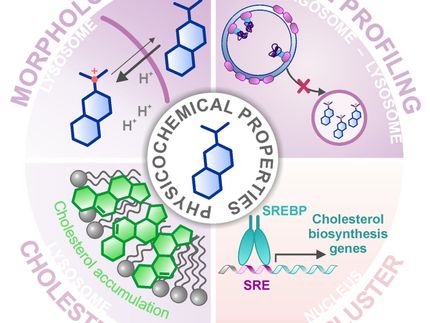A Second Chance for New Antibiotic Agent
Drug candidate rejected 20 years ago may now be more selective thanks to new research
Advertisement
Twenty years ago, a drug candidate was rejected due to its side effects. Researchers have now figured out how to potentially make a successor molecule more selective.
An increasing number of bacteria have become resistant to many commonly used antibiotics. Researchers from Bochum have discovered a fresh opportunity for a potential active molecule whose predecessor was rejected: By studying its interaction with the bacterial target protein very precisely in three dimensions, they identified a previously undetected point of attack that could be targeted by this compound. “As this point of attack only occurs in bacterial proteins, the drug would become much more selective and its harmfulness to human cells would be reduced,” explains Professor Raphael Stoll, head of the Biomolecular NMR Spectroscopy research group at the Faculty of Chemistry and Biochemistry at Ruhr University Bochum, Germany. The researchers published their findings on April 4, 2024 in the Journal of Medicinal Chemistry.
Significant attempts 20 years ago
The study focused on the protein peptide deformylase (PDF). Involved in protein maturation processes in cells, PDF is essential for the survival of bacteria. However, it’s found in both bacteria and human cells. “Some 20 years ago, significant attempts were made to combat PDF with antibiotic agents,” Raphael Stoll points out. “Yet, the original drug candidate, i.e. actinonin, had to be discarded for several reasons. One of the problems faced was the newly discovered human PDF, which was potentially associated with side effects. Still, further research was carried out to generate modified active compounds,” Hendrik Kirschner adds. As part of his doctoral thesis, he examined PDF in detail in the current study and analysed it from the perspective of structural biology using biomolecular nuclear magnetic resonance (NMR) spectroscopy and X-ray crystallography. These techniques enabled him to obtain a 3D structure resolved at the smallest detail. “This is the result of many years of collaborating with our colleague Professor Eckhard Hofmann,” Raphael Stoll says.
Active molecule is adapted and made more selective
“We can use these techniques to visualize surfaces and binding pockets of biomolecules and show that the binding of molecule to this protein is not static, but dynamic,” Hendrik Kirschner explains. The researchers noticed that there are two different binding orientations in the protein for a modified drug molecule: In addition to the orientation that is also present in human PDF, there’s another one that should, in principle, exclusively occur in bacterial PDF. “This prompts us to modify the drug molecule so that it favours the second binding orientation,” Raphael Stoll says. As a result, the antibiotic molecule could be rendered more selective. “It could provide this drug candidate with a second chance,” Hendrik Kirschner concludes.























































